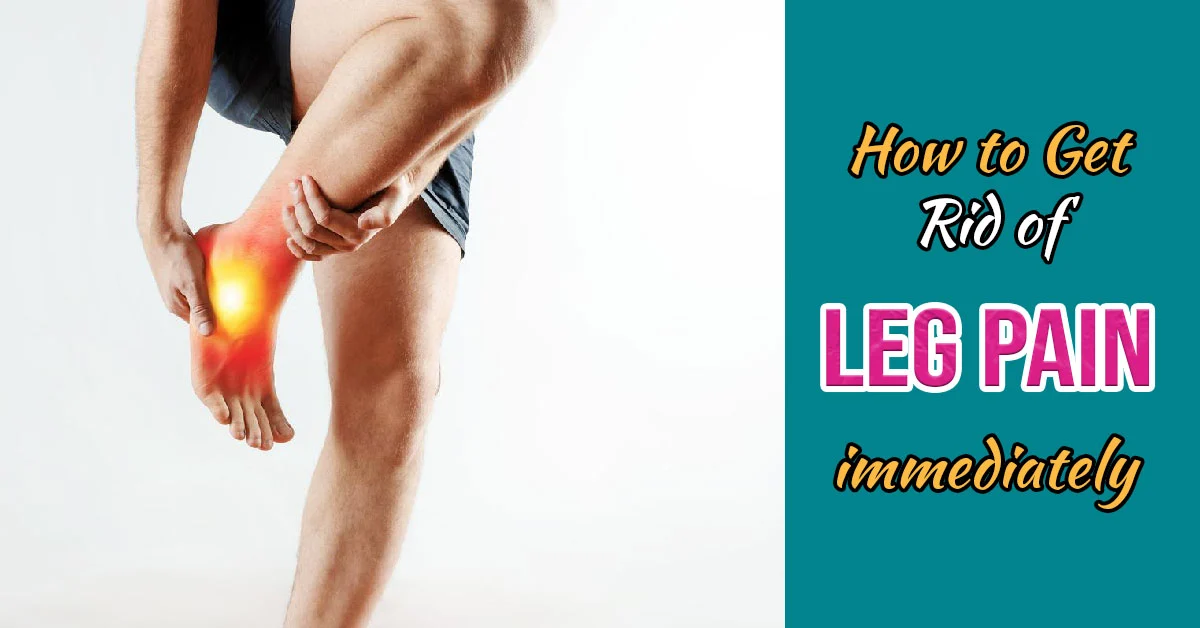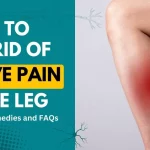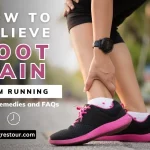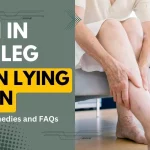Leg pain can be a debilitating condition that significantly impacts your daily life. Whether you’re an athlete dealing with overuse injuries or experiencing chronic conditions like arthritis or sciatica, finding effective ways to alleviate leg pain quickly is paramount. Prompt relief from leg pain can significantly improve your quality of life and enable you to engage in daily activities with greater comfort and mobility. In this comprehensive guide, we’ll explore various causes of leg pain and provide practical strategies for immediate relief. So, if you’re wondering How to Get Rid of Leg Pain Immediately, keep reading!
Understanding the Causes of Leg Pain
Before we delve into the strategies for immediate relief, it’s essential to understand the underlying causes of leg pain. Leg pain can stem from various factors, ranging from overuse injuries to more serious medical conditions. Let’s explore some of the common causes:
Overuse Injuries
Excessive and repetitive use of muscles without proper rest can lead to overuse injuries. Athletes like runners and cyclists are particularly prone to leg pain caused by overuse injuries. These injuries occur when the muscles experience constant strain and pressure, resulting in pain and discomfort.
Injury or Fracture
Trauma or injury to the leg can cause muscle aches and pain. Severe trauma may result in a fracture, leading to intense leg pain. Common symptoms of leg fractures include redness, swelling, and heat in the affected area. In such cases, seeking medical attention is crucial for proper diagnosis and treatment.
Muscle Spasms and Strains
Leg pain can be caused by muscle sprains and strains, particularly in the calf and hamstring muscles. Dehydration and muscle weakness often contribute to these types of injuries. It is important to prioritize proper hydration and strengthen the muscles to minimize the risk of sprains and strains. These measures can help prevent such injuries and reduce the likelihood of experiencing leg pain.
Inflammatory Conditions
Leg pain can be commonly caused by chronic inflammatory conditions such as arthritis. For instance, knee osteoarthritis often leads to persistent and excruciating knee pain. Rheumatoid arthritis can impact the lower back and legs, causing discomfort and reducing mobility.
Vascular Issues
Leg pain can also be a symptom of underlying vascular issues such as chronic venous diseases or varicose veins. Varicose veins occur when the leg veins dilate and become swollen, often causing pain and discomfort. Conditions like venous insufficiency can manifest as leg pain, highlighting the importance of addressing vascular health in leg pain management.
Sciatica
Inflammation of the sciatic nerve in the lower back can cause leg pain that radiates down the leg, commonly affecting the left leg. Sciatica can be challenging to diagnose and treat effectively. Understanding the underlying cause of leg pain is crucial in determining the most appropriate treatment strategies.
Immediate Relief Strategies for Leg Pain
Now that we better understand the causes, let’s explore practical strategies for immediate relief from leg pain. These strategies can provide quick relief and help improve your overall quality of life.
Over-the-Counter Painkillers
Over-the-counter painkillers can be a viable option for immediate relief from leg pain. Muscle relaxants like Tramadol may also provide relief by reducing muscle tension.
Follow the RICE Method
The RICE method is a simple self-care technique that can provide immediate relief for leg pain caused by minor injuries. It involves four key steps:
- Rest: Take a break and limit movement to allow the injured tissues to heal, resulting in pain relief.
- Ice Application: Apply ice or a cold pack to the painful area to reduce inflammation and alleviate pain.
- Compression: Wrap a bandage around the leg to reduce swelling, which is particularly helpful for conditions like varicose veins.
- Elevation: Keep the painful leg elevated by placing pillows under the legs while sleeping to reduce pressure and alleviate pain.
Following the RICE method can effectively manage pain and promote healing.
Stay Hydrated
Dehydration has long been associated with muscle cramps and can contribute to leg pain. Marathon runners, for example, often experience leg muscle cramps due to dehydration and electrolyte depletion. Ensuring adequate hydration by drinking plenty of water can help alleviate leg pain caused by muscle cramps.
Heat Therapy
Applying heat to the affected muscles can provide relief from leg pain. Heat therapy helps relax tense muscles and closes pain receptors, alleviating muscle tension. Research has shown that heat therapy benefits patients with osteoarthritis and knee injuries. You can use heat wraps or alternate between heat and cold treatment for optimal results.
Massage Therapy
A massage from a professional therapist can have multiple therapeutic effects on leg pain. Massage enhances blood flow to the affected muscles, reducing inflammation and relieving pain. This therapy is especially beneficial for individuals experiencing leg pain due to low back pain. Additionally, massage therapy can help reduce stress and anxiety, contributing to overall pain relief.
Stretches and Exercise
Strengthening weak muscles through stretches and exercises can prevent leg pain in the long run. A sedentary lifestyle and diminished blood flow to the lower limbs can lead to frequent cramps, spasms, and nerve impingements. Exercising that target the torso, abdomen, and leg muscles can help improve blood flow and reduce the risk of leg pain.
Follow an Anti-Inflammatory Diet
Following an anti-inflammatory diet can help reduce leg pain. Including anti-inflammatory foods like ginger, garlic, and turmeric can help reduce pain and inflammation effectively. These natural ingredients have properties that aid in alleviating discomfort and promoting overall well-being. Ginger is mainly known for its extensive research on its antioxidant and anti-inflammatory effects. Turmeric extracts containing curcumin have also shown promise in relieving arthritis symptoms. Including these foods in your diet may contribute to managing leg pain and promoting overall well-being.
Strengthening Your Legs for Long-Term Relief
In addition to immediate relief strategies, it’s essential to strengthen your leg muscles for long-term pain prevention. Intense leg and hip muscles can withstand greater forces and pressure, reducing the risk of injuries and pain. Incorporate the following exercises into your routine to keep your legs strong:
- Squats
- Lunges
- Alternate knee lifts
- Calf raises
- Knee extensions and knee curls
- Leg extensions
By following an anti-inflammatory diet and engaging in regular exercise, you can maintain strong leg muscles and minimize leg pain.
When to Seek Medical Attention

While the abovementioned strategies can provide immediate relief for leg pain, knowing when to seek medical attention is crucial. If your symptoms persist for over six months and hinder your daily activities, it’s best to consult a physician. Your primary care doctor can evaluate your condition and refer you to a specialist. Orthopedic doctors or vascular doctors are examples of specialists who can offer further expertise in diagnosing and treating leg pain. Seeking appropriate medical referrals can ensure you receive care for your specific leg pain concerns.
In conclusion, Leg pain can significantly impact your quality of life, but you can find relief by understanding the underlying causes and employing the right strategies. Whether it’s through over-the-counter painkillers, following the RICE method, staying hydrated, or incorporating heat therapy, massage, stretches, and exercise into your routine, there are various ways to alleviate leg pain immediately. Adopting an anti-inflammatory diet and strengthening leg muscles can provide long-term relief and prevent future pain. Remember, if your symptoms persist, it’s always best to seek medical attention for a proper diagnosis and personalized treatment plan. You can use this mattress while sleeping if you want. These mattresses will be good for leg pain.
FAQ:
How can I relieve leg pain immediately?
If you’re looking to relieve leg pain immediately, there are a few strategies you can try. First, elevate your legs to reduce swelling and improve circulation. Apply a cold compress or ice pack to numb the area and reduce inflammation. Gentle stretching and massaging the affected leg may also provide some relief. Over-the-counter pain medications can help temporarily alleviate discomfort. However, seeking medical advice for an accurate diagnosis and a personalized treatment plan is advisable if the pain worsens.
Are there any home remedies to get rid of leg pain fast?
Yes, there are home remedies for fast leg pain relief. Try applying a warm compress, gentle stretching, or elevating the leg. Massaging with a topical pain reliever may help. Incorporating anti-inflammatory foods like ginger and turmeric into your diet can also be beneficial. If the pain persists, seek medical advice for proper evaluation and treatment.
What are some natural ways to alleviate leg pain quickly?
There are natural ways to alleviate leg pain quickly. Try applying a warm compress, doing gentle stretches, or using essential oils for massage. Elevating your leg and using cold packs can also provide relief. Additionally, incorporating anti-inflammatory foods, such as ginger and turmeric, may help. Remember to consult a healthcare professional if the pain persists or worsens.
When should I seek medical attention for severe leg pain?
If you have severe leg pain, seeking medical attention is crucial. Contact a healthcare professional if the pain persists, worsens, or is accompanied by swelling, redness, or difficulty moving the leg. They can assess your condition, offer suitable guidance, and provide treatment options to address the underlying cause of the pain.
Can specific exercises help reduce leg pain immediately?
Yes, specific exercises can help reduce leg pain immediately. Gentle stretching exercises, such as calf and hamstring stretches, may relieve relief. Low-impact activities like swimming or cycling can also help alleviate pain. However, consulting with a healthcare professional or qualified physical therapist is essential to identify the most appropriate exercises for your condition. This ensures you follow proper technique and prioritize safety during your exercise routine.




1 thought on “How to Get Rid of Leg Pain Immediately”